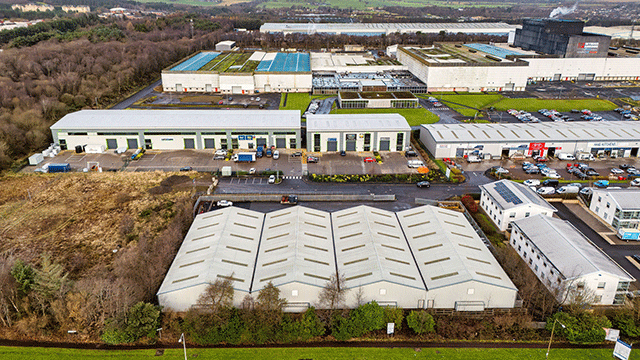Determined to see off attempts to make it split into a propco-opco structure, Sainsbury’s is deepening its relationships with developers – and plans more jvs and sales. By Noella Pio Kivlehan
After spending much of last year staving off Robert Tchenguiz’s efforts to split it into separate property and operating businesses, it seems ironic that Sainsbury’s is now expanding its relationships with commercial property players to enhance its estate.
In the past nine months, Sainsbury’s has signed joint ventures with Land Securities and British Land to develop more than 40 of its stores and now the retailer’s newly promoted “managing director” of property has been charged with setting up more such partnerships.
Peter Baguley, who since mid-June has sat on Sainsbury’s operating board, claims that by retaining a 50% stake in these property vehicles, the retailer gains exposure to development expertise and retains adequate control over the jv’s activities – something it feared losing under Tchenguiz’s proposal.
The property entrepreneur, a 10% shareholder, wanted to force Sainsbury’s into a propco-opco venture to unlock the value of its estate: selling off its £8.6bn property portfolio into a new property company (propco) and leaving the quoted, on balance sheet business to focus on operating (opco). Private equity group CVC Capital Partners also tried to persuade the Sainsbury’s board to make this split, but walked away in April 2007 without having made a formal offer.
“We didn’t feel that anyone else could manage [our portfolio]. We may need some help, but we are very clear about what we want to achieve,” Baguley argues at Sainsbury’s Holborn headquarters. “We can develop our own sites,” he adds. “We have been doing that already. But if it is a more complex scheme, then we don’t have the expertise in house to do that and we can call on other companies’ expertise.”
Working with Matt Birch, operations director at Sainsbury’s property investments, Baguley also hopes to put together more sale-and-leaseback structures this year to ensure the company maximises the value of its property holdings, made up of 504 supermarkets and 319 convenience stores.
“I don’t think there is anybody we wouldn’t do a joint venture with,” he says, admitting that Sainsbury’s has had numerous approaches from developers since announcing the LandSec and British Land deals.
Property priority
This is all part of a realisation – perhaps triggered in no small part by Tchenguiz’s efforts – that property needed to be much higher on the agenda at Sainsbury’s.
“It was a matter of prioritising,” explains Baguley. “We wanted to sort out the trading first and now we want to kickstart new store activity the business recognises that it has to show a good return on its property assets for the shareholders we have a responsi-bility to show that we have a clear strategy of what we want.”
The property plan – announced in May 2007 as part of chief executive Justin King’s wider three-year recovery programme for the retailer, “Making Sainsbury’s great again” – includes increasing Sainsbury’s 17m sq ft estate 10% by 2010.
That meant a commitment to pressing ahead with 75 store extensions, 30 new supermarkets, 100 new convenience stores and 190 refurbishments.
In the months following King’s defiant announcement, Sainsbury’s had to contend not only with ongoing pressure from Tchenguiz for what its chairman called a “massive, ‘big bang’ solution” but also with long-running speculation that sovereign wealth fund Qatar Investment Authority would mount a £10.6bn takeover bid for the company.
“Tchenguiz had started building his stake and, just before the Qataris came in, we felt quite strongly that we should be saying something definite about our property assets,” Baguley recalls. “When you are a business in recovery, you are looking to do certain things with your assets.”
In a world where retailers – perhaps with the exception of the discount stores – are already feeling the effects of waning consumer confidence, such acquisitive aspirations appear at best ambitious and at worst unviable.But Baguley, who has worked for retailers including Argos after starting his career at agent Healey & Baker, says these are slow-burn plans that should ride out the current economic downturn. “If we were in a position where we were bringing development out in the next couple of years, then I would be concerned,” he says.
Joint ventures such as those already set up with LandSec and British Land are at the core of his plans to meet King’s growth targets, improve the company’s vast property assets – and deter hungry speculators. He is keen to recruit more people to his new fledgling division of two, which is responsible for jvs and development opportunities.
Of course, Sainsbury’s has been here before with its own separate property division. From 1993 until it was sold to a Schroders consortium in 2003, J Sainsbury Developments developed land around Sainsbury’s stores with retail and mixed-use schemes.
The difference this time is that, rather than becoming a mixed-use property developer merely to get stores on sites, Sainsbury’s will allow the experts to be the developer and focus on its core operating business.
According to Baguley, the idea to combine forces in this way came from LandSec’s head of retail, Richard Akers. But he is quick to point out that, despite teaming up with the REIT on an initial three sites worth around £100m, Sainsbury’s will not get preferential treatment at any of LandSec’s schemes.
“If it’s a town where they [LandSec] are looking to develop and we are looking for a site, then we hope they will come and talk to us first. But it’s not guaranteed that we would get it, except in sites where we are actively paying in to the joint ventures.”
Baguley says that the £1.2bn British Land deal – under which Sainsbury’s bought back stakes in properties it had sold off in the 1980s and 1990s – also allows Sainsbury’s to piggy-back on the developer’s expertise.
The quoted property company has changed a great deal since those early sale-and-leasebacks, he believes. “There is a new management team in British Land and the company is much more tenant friendly, so we bought a half-share in the freeholds. We have a lot of plans with them, so we think there is plenty of potential,” Baguley says.
In recent years, Sainsbury’s has been forced to admit that it took its eye off the ball in the 1990s when it came to developing a property pipeline and has expressed its deep concern about the size of Tesco’s landbank.
Now Baguley will be hoping that the recent turmoil caused by Tchenguiz and the Qataris will keep property firmly on the agenda for Sainsbury’s board.
Baguley’s jv trolley starts filling up to make supermarkets bigger
Last November, Sainsbury’s announced a 50:50 joint venture with Land Securities.
The pilot jv holds an initial three stores which have the potential to be extended and redeveloped. Sainsbury’s is contributing the freehold stores and LandSec will undertake the development work.
The stores are in: Wandsworth in south London, which could accommodate 420 flats and a 65,000 sq ft store extension on a 5.4-acre site Hull in East Yorkshire and Thanet in Kent. The three sites have an aggregate value of £113.4m.
The redevelopment programme is expected to last for seven years, and Sainsbury’s plans to add further stores to the programme if it proves a success.
Further evidence of Sainsbury’s strategy to increase control of those supermarkets which have development potential, while selling off its fully developed, mature assets, came in April, when it announced a £1.2bn jv with British Land. This holds 39 of its largest supermarkets across the UK, which were already owned by British Land. Under the deal, Sainsbury’s bought back a half share in the properties from the property company, investing £273m.
British Land will actively manage the stores and there are already plans to extend up to 25 of them by as much as 500,000 sq ft in net selling area. The venture will have an initial life of 10 years, with an option to extend.










